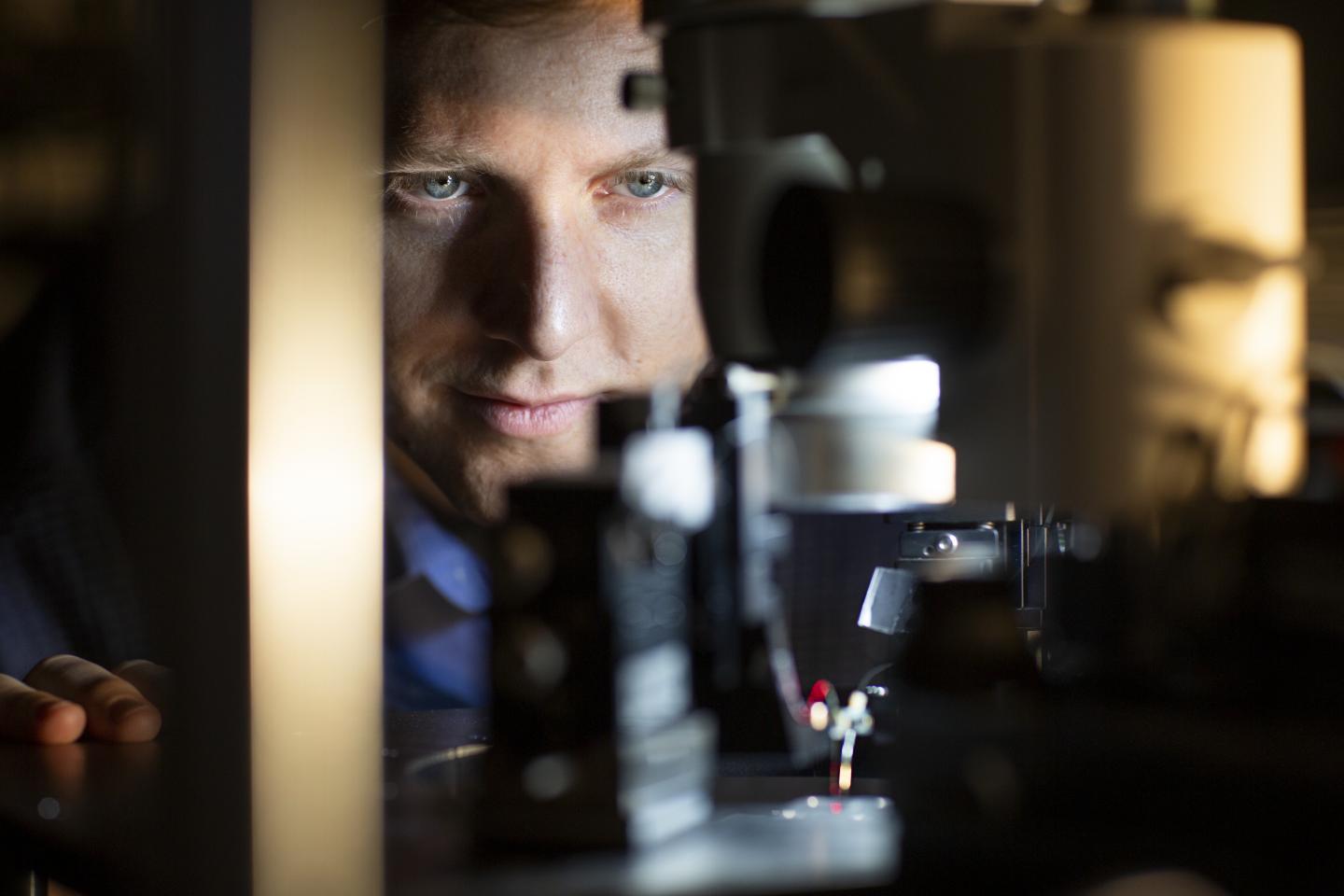Solving the linewidth issue in diode lasers.

Project to investigate nonlinear effects in semiconductor lasers is a stepping-stone to enable next generation higher-order modulation in fibre optic networks
Aarhus University has received a grant from the Independent Research Fund Denmark to investigate nonlinear effects in semiconductor lasers - a stepping-stone to enable next generation higher-order modulation in fibre optic networks
One of the properties of lasers is the reduced spectral distribution of their optical emission as compared to other light sources.
However, this laser 'linewidth' can be greatly influenced by the environmental conditions, which deteriorate their performance when used outside the research lab.
Now, Nicolas Volet, who leads the Integrated Photonics group at Aarhus University (AU) has received a DKK 2.9 million grant from the Independent Research Fund Denmark for a new ambitious project, that aims at solving the linewidth issue of diode lasers.
This issue is known to be one of the limitations in the deployment of coherent higher-order modulation transceivers for emerging applications; for instance, 5G wireless.
This project is based on a recent breakthrough discovery made by Nicolas Volet and Holger Klein, director of chip design at the US-based company OE Solutions America, Inc (OESA).
"We have discovered a method to effectively narrow the linewidth of a laser by a factor of up to 500, which is required to enable higher-order modulation formats in coherent communication, where information is encoded in the phase, amplitude and polarization of the lightwave signal. This unique approach can reduce the cost, size and power consumption compared to today's laser technology," says Klein.
Nicolas Volet continues: "Indeed, this discovery is extremely encouraging as it is expected to turn a notorious limitation of semiconductor lasers into an opportunity to increase optical network transport capacity and simplify their packaging for real-world applications. Our group will work closely with OESA's Photonic Integrated Circuit (PIC) design team in Santa Barbara, CA led by Klein to study and further improve this new breakthrough technology."
If successful, the project encompasses a brand-new laser technology, that has the potential to simplify modern communications technology and make it much smaller, cheaper and a lot more energy-efficient - a pivotal change, since lasers are fundamental for modern communication and instrumentation:
"We are pleased to partner with professor Volet and Aarhus University on this significant work which could lead to a breakthrough in coherent optical communication for future generation optical networks," says Klein.


































